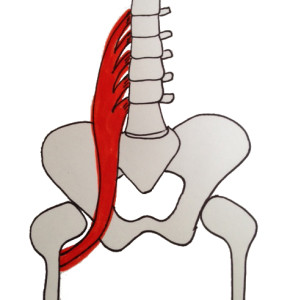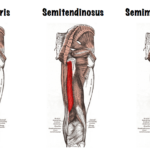Stand up, take a deep breath.
On exhalation, draw your belly button to your spine – Do you feel your Psoas contracting?
The Psoas is a deep core muscle that works in conjunction with surrounding muscles to stabilize the lumbar spine and flex the hip. Together with the Iliacus, the Iliopsoas is an important low back stabilizer and strong hip flexor. Due to its deep location in the trunk, the Psoas can be difficult to isolate.
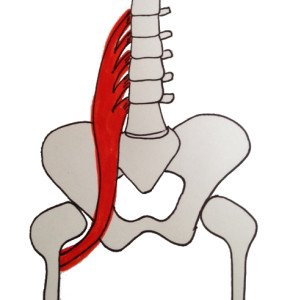
o
Anatomy
Origins: bodies and transverse process of the lumbar vertebrae Insertions: lesser trochanter of the femur, superior ramus of the pubis

o
In Other Words…
The long muscle is located deep to the abdomen and connects the leg to the spine. It starts out as five little muscles attached to the sides and body of the lumbar vertebrae. Joining to form one muscle, it makes its way through the pelvis and attaches on the inside of the femur.
0
When do you use your Psoas?
The Psoas works in conjunction with other muscles to help you lift your leg in front of you, turn your foot out to the side and bend your lumbar spine to touch your toes. It also joins forces with the Iliacus to create the Iliopsoas, the ultimate spine stabilizer and the reason you can keep a steady warrior pose in yoga practice!
Hip flexion – walking or hiking up and incline, cycling Laterally rotate the hip – kicking a ball with the inside of your foot Flex the trunk towards the thigh – a forward back bend – reaching for your toes Tilt the pelvis anteriorly (major) and posteriorly (minor) – cat and cow poses
Psoas pain and tension
Pain related to Psoas dysfunction can manifest itself in different ways in your body. You may feel tightness or restrictions in your low back, tenderness in your hip area, or a pulling sensation at the area attachment on the femur.
Dysfunction can result from the following structural faults:
- Tension in the muscle – overuse
- Shortening of the muscle – posture (forward pelvis tilt)
- Weakening of the psoas – overuse and posture (backward pelvis tilt)
Tension in the Psoas
Tension in the Psoas can stem from a range of activities that encompass repetitive hip flexion. Cycling, running hurdles, skiing, dancing, and hockey to name a few!
Shortened Psoas
Shortening occurs when the muscle is held in an incorrect posture for too long, be it a relaxed or contracted state. Sleeping in the fetal position or sitting for extended periods are factors that can contribute to the shortening of the Psoas.
Stressed or weakened Psoas
Tension in the supporting stabilizing muscles, for example the rectus abdominus and the glutes, can put excessive strain on the sturdy Psoas. This can lead to weakness, stress and fatigue in the Psoas. Greatly increasing your exercise program before the muscles have time to adjust, or training for extensive periods can be contributors to this stress.
Massage Therapy and the Psoas
A massage therapy session can help in relieving overuse tension causing back, hip or knee pain, as well as lengthening the muscle after it has been shortened due to poor posture. It will generally include massage and stretching techniques.
Massage
Because of its deep location, time must be spent warming the soft tissues surrounding the muscle before it can be palpated. Psoas work is conducted slowly and intently, with clear communication between Therapist and client.
The superior, or upper portion of the Psoas can be palpated and worked through the back, whilst the inferior, or lower portion of the muscle can be reached through the front of the hip. Although effective, Psoas work can be slightly sensitive and unpleasant!
In the instance of a stressed or weakened Psoas, massage can be effective without having to actually palpate the muscle itself. Instead, the supporting muscles are massaged (eg the rectus abdominus and the glutes). Relieving tension and correcting the posture of surrounding muscles will in turn reduce the amount of stress placed on the Psoas.
Stretching
Stretching will assist in lengthening a shortened muscle. As the Psoas can be difficult to locate, stretching techniques can be challenging to execute by oneself; an assisted or facilitated stretch after warming up the muscles with massage is highly effective. More so, active stretching techniques such as AIS and PNF will effectively contract and relax the Psoas, providing a more targeted stretch.
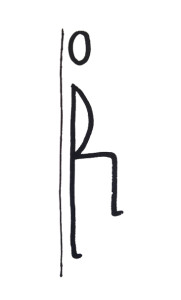
TEST #1: Check the strength of you Psoas
Stand against a wall to ensure that you do not cheat your Psoas by tilting your pelvis (therefore engaging your lower back muscles). Engage your Psoas, slowly raise one knee to a 90 degree angle, being careful to keep your hips square. Can you hold for 30 seconds?
- If you are able to easily hold this position for 30 seconds, you have passed the test and have strength in your Psoas!
- If you find it difficult or even impossible to hold this position for 30 seconds, you may have a weak Psoas and need to work on strengthening.
o
TEST #2: Check if your Psoas is shortened or holding tension
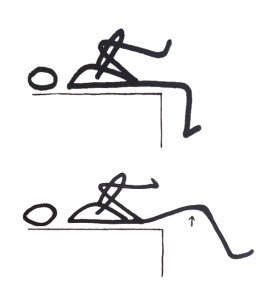
Lay on a table or bed with your feet dangling off the edge. Hug both knees back to your chest. Slowly extend one leg back to the table/bed, ensuring that you continue to hug the first leg tightly. Let your extended leg dangle off the table/bed. Does your leg lay flat on the table/bed?
- If your leg is able to lay flat on the table, you have passed the test! However, if your psoas is weakened from the first test, you need to work on strengthening techniques.
- If your upper leg does not lay flat on the table but you passed test #1, you have tension in your Psoas and need to work on stretching.
- If you had trouble performing both tests, you have a weakened, shortened Psoas and need to work on lengthening (strengthening in conjunction with stretching).
Self care:
Stretching exercises for the Psoas
(Maintain a relaxed Psoas!)

Knee lunge
Beginning in a kneeling position, bring your right leg out in front of you with your knee bent to a 90-degree angle. Contract the left glute. Lunge forward as far as you can go, being careful to keep your hips squared. HINT: your spine should be vertical – ensure that your ribcage is on the same vertical line as your hips. Too easy? Reach your arms up to the sky, arch your back. Still to easy? Grab your left wrist with your right hand, and gently pull your trunk towards the right.
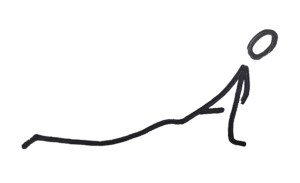
Cobra
Lay face down on the floor with your palms by your ribcage in a push-up position. Point your toes, engaging your quads. Gently raise your torso by extending your arms.
HINT: Try to keep your glutes relaxed and be careful not to shrug your shoulders!
Lengthening exercises for the Psoas
(These exercises combine both stretching and strengthening, and should be practiced in a fluid movement.)

Side stretch
Start in a squat. Lean your right forearm on your right knee, extend your left arm to reach over your head at a 45-degree angle. Extend your left leg so that your left side creates a straight line from fingertips to toes. (This position contracts the Psoas, internal and external obliques on the right side, and stretches the Psoas, internal and external obliques on the left side.) Hold for three seconds, slowly move back to a squat and repeat on the opposite side. Continue with five repetitions.
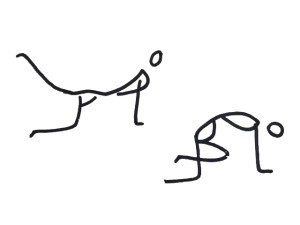
Cat pose variation
Position yourself on the floor on your hands and knees. Bring one knee towards your nose, tucking your head down between your shoulders. (This position is contracting the abdominals, yet stretching the glutes). Reverse the exercise by extending your leg out behind you, straightening your knee, lifting your foot as high as you can, and arching your back to looking at the ceiling (this position is stretching the psoas and abdominals, and contracting the glutes). Continue with five repetitions.
Strengthening exercises for the Psoas
(Maintain a contracted Psoas!)
HINT: You should not feel your low back contracting. If you do, this means that your back has taken over the stabilization and your Psoas in no longer engaged! Adjust the exercise so that you can maintain contraction in the Psoas.
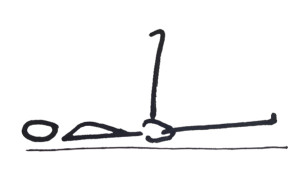
Leg lifts
Lay on the floor with your legs at a 90-degree angle. Engage your Psoas, and slowly lower one leg towards the floor. Too difficult? Slightly bend your knees when lowering your legs. Too easy? Try two legs at once. Still too easy? Reverse the exercise by starting with your legs extended an inch above the floor and then raising them to a 90 degree angle.
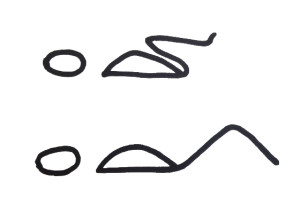
Crunches
Lay on the floor with your knees bent and feet flat on the floor, about a foot from your buttocks. Engage your Psoas and slowly bring your knees to your chest. Release your knees, maintain a bent leg, and bring your toes one inch from the ground. Continue with five repetitions.
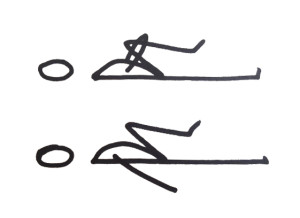
Single leg crunches
Lay on your back with your legs extended. Engage your psoas and hug one leg back to your chest. Hold for ten seconds. Then, let go, whilst trying to maintain the exact position of your bent leg. Hold for another ten seconds, before extending your leg to rest.
0
0
Now… Stand up, take a deep breath. On exhalation, draw your belly button to your spine – Do you feel your Psoas contracting?!
References:
A Trail Guide to the Body Andrew Biel 5th Edition, publication date: 2014
http://sequencewiz.org/2014/04/30/stretch-the-psoas/
http://www.fix-knee-pain.com/psoas-stretch/
http://www.floota.com/psoas_tests.html
This article/video is for educational purposes only; do not attempt without your physician’s clearance. If you are in pain or injured, see your physician.
Copyright © Vidal Sports LLC 2018




